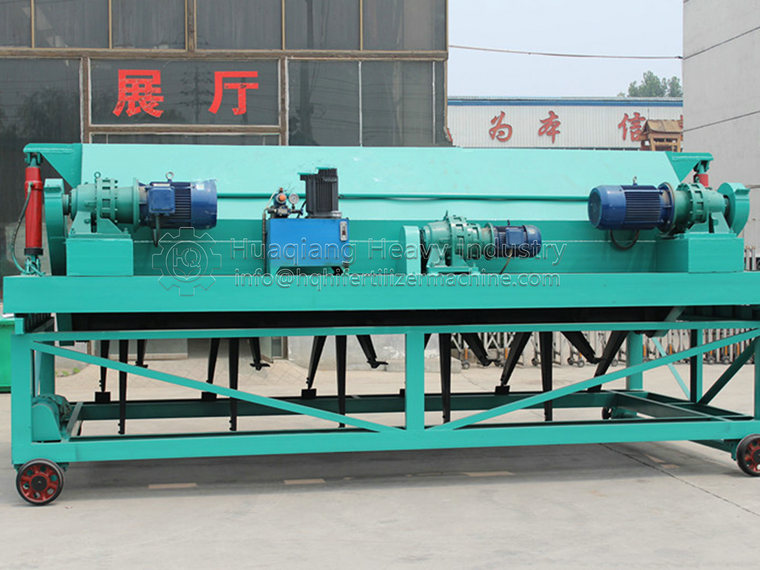In the production of organic fertilizers, trough type and track type turners are commonly used fermentation equipment, each with its own characteristics in the process of fermenting fertilizers.
From the perspective of working principle, the trough type turning machine usually operates in a fixed fermentation tank. Through the turning components installed on the crossbeam, the materials in the tank are stirred and turned, allowing them to fully contact the air and promote aerobic fermentation of microorganisms. The track type stacker relies on the movement of the tracks and can freely shuttle through a wider area to perform stacking operations on materials stacked on the ground.
In terms of fermentation effect, the trough type turning machine works in a fixed trough, and the material fermentation environment is relatively stable. The fermentation temperature, humidity and other conditions are easy to control, which can ensure the uniformity of fertilizer fermentation and produce stable fertilizer quality. Although the crawler type stacker has high flexibility, there may be slight differences in fermentation degree when flipping at different positions due to different initial states of the materials.

In terms of applicability, the trough type turning machine is suitable for large-scale and standardized organic fertilizer production, especially for enterprises with limited space but high production demand. It can work in parallel through multiple fermentation tanks to improve production efficiency. Crawler type stackers are more suitable for open spaces and scattered material stacking, such as manure treatment in some large breeding farms, which can flexibly stack materials from different locations.
In terms of operational convenience, the slot type flipping machine is relatively simple to operate. Just set the flipping parameters, and the equipment can run according to the program in the slot. However, equipment installation and maintenance require a certain level of professional knowledge. The crawler type flipping machine has strong operational flexibility, and the operator can adjust the flipping route and position at any time according to the actual situation, but the skill requirements for the operator are relatively high.
In terms of energy consumption, the trough type turning machine has a relatively stable power consumption and low energy consumption due to its fixed working space. The tracked stacker requires frequent movement and overcomes resistance from different terrains, resulting in relatively high energy consumption.
In terms of investment cost, the early construction of the trough type stacker requires investment in infrastructure such as fermentation tanks, and the equipment itself is also relatively expensive, resulting in a large overall investment. The price of tracked stacker equipment is relatively low, but if the site requires large-scale leveling and other preliminary preparations, it will also increase certain costs.
When choosing, enterprises should comprehensively consider factors such as their own site conditions, production scale, and budget to determine the most suitable flipping equipment.